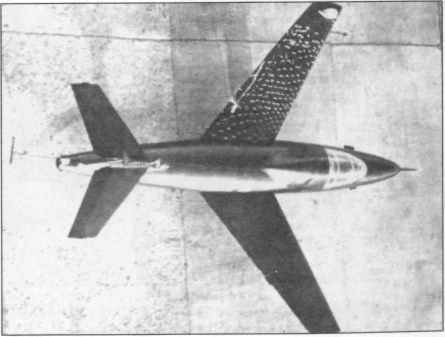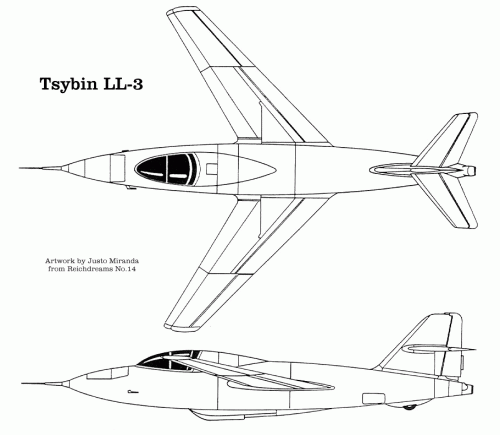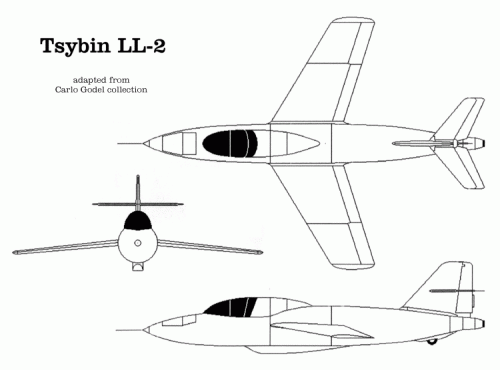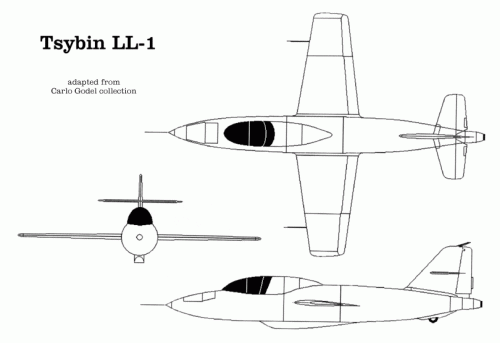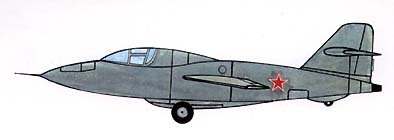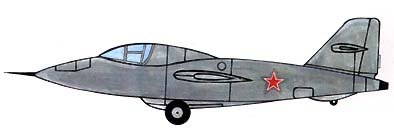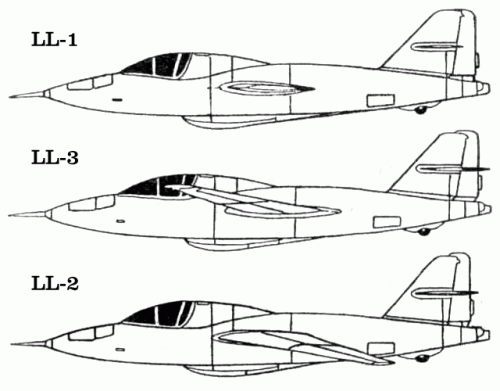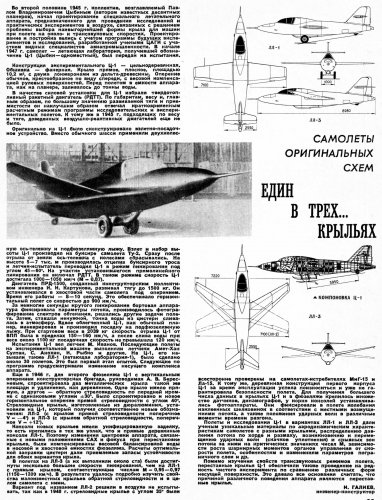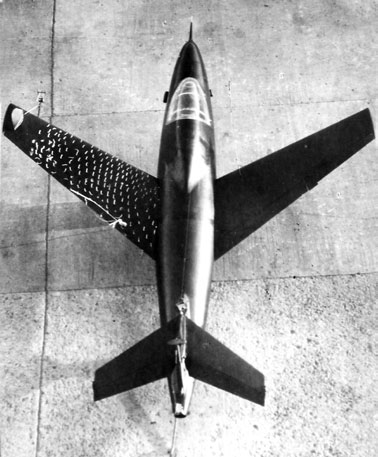- Joined
- 25 June 2009
- Messages
- 13,776
- Reaction score
- 3,045
In 1946-1948, Pavel Tsybin developed three flying laboratories (летающих лаборатории or "LL") with different wings, all using solid propellant.
All three variants were designed with the same airframe, but with three different wings of the same area (10.0 m²):
All work on the aircraft and gliders with solid fuel in that period was not purely empirical. Engineers with some practical experience and recognition in the field of solid propellant motors took part in these experiments. Still, the main drawback of solid motors was that they did not allow to increase the speed of the aircraft for a long time. That is why experiments on the application of liquid rocket engines for aircraft were carried on.
All three variants were designed with the same airframe, but with three different wings of the same area (10.0 m²):
- a straight wing version (LL-1),
- a forward-swept wing version, with a 30 ° angle (LL-3)
- a swept-wing version, with a 30° angle (LL-2).
- The LL-1 glider (Ts-1, or experimental glider No.1) was a straight-wing aircraft of all-wood construction. It featured a monocoque plywood fuselage. The wing had a +2° dihedral and a 3° leading edge sweep.
- The LL-3 glider (experimental glider No. 3) had the same size, area and mass as LL-1, but its wings were swept and it was made of duralumin (wood being considered too risky).
All work on the aircraft and gliders with solid fuel in that period was not purely empirical. Engineers with some practical experience and recognition in the field of solid propellant motors took part in these experiments. Still, the main drawback of solid motors was that they did not allow to increase the speed of the aircraft for a long time. That is why experiments on the application of liquid rocket engines for aircraft were carried on.

